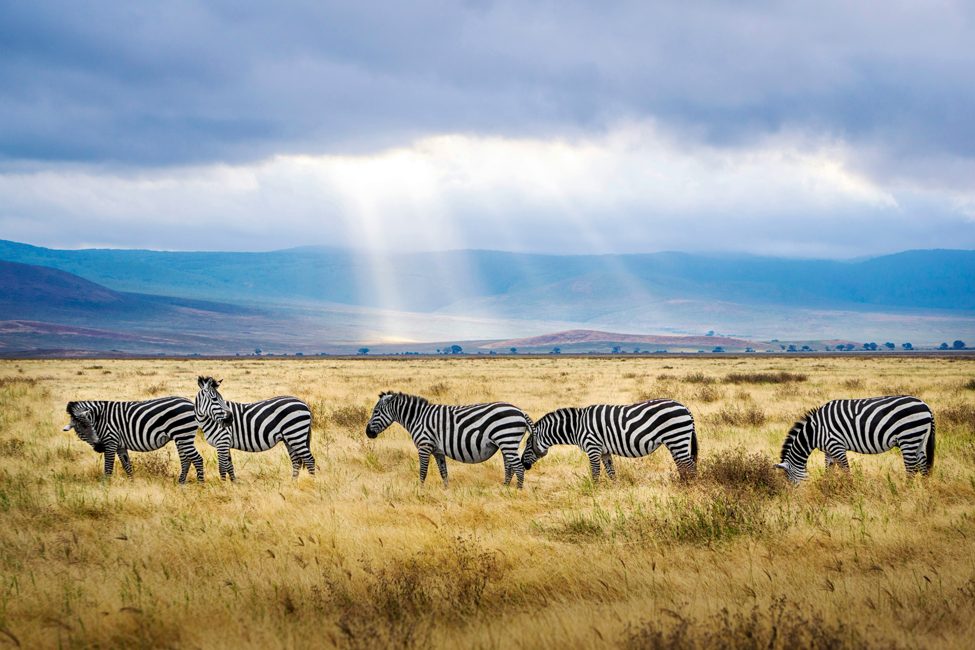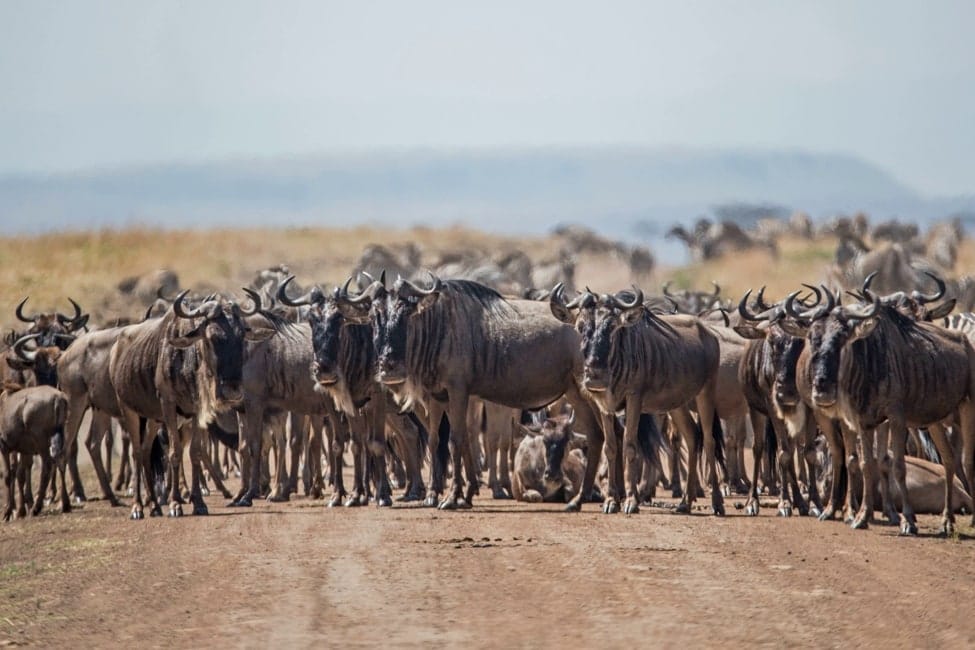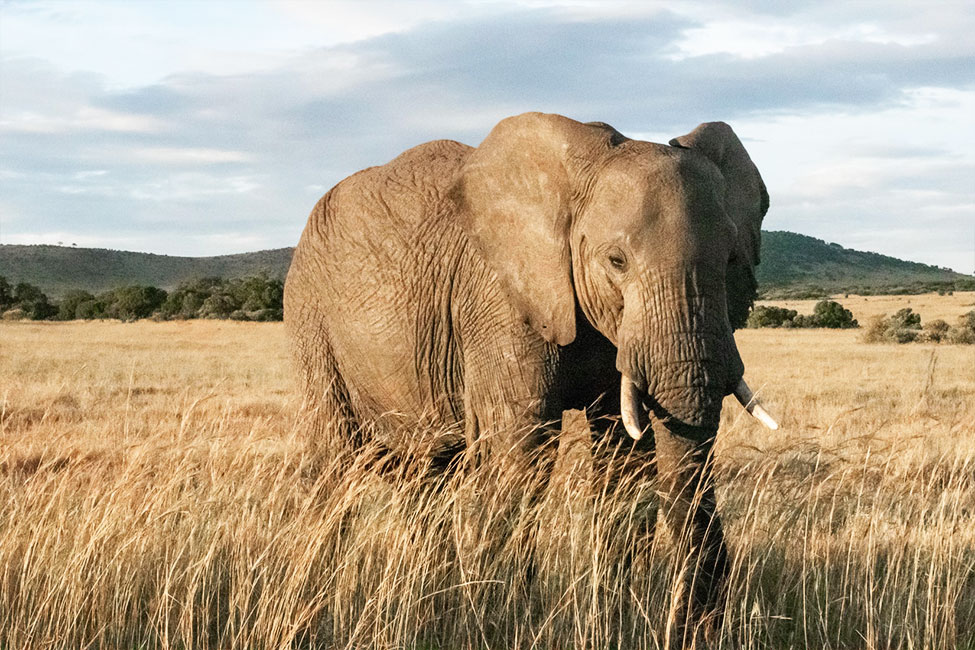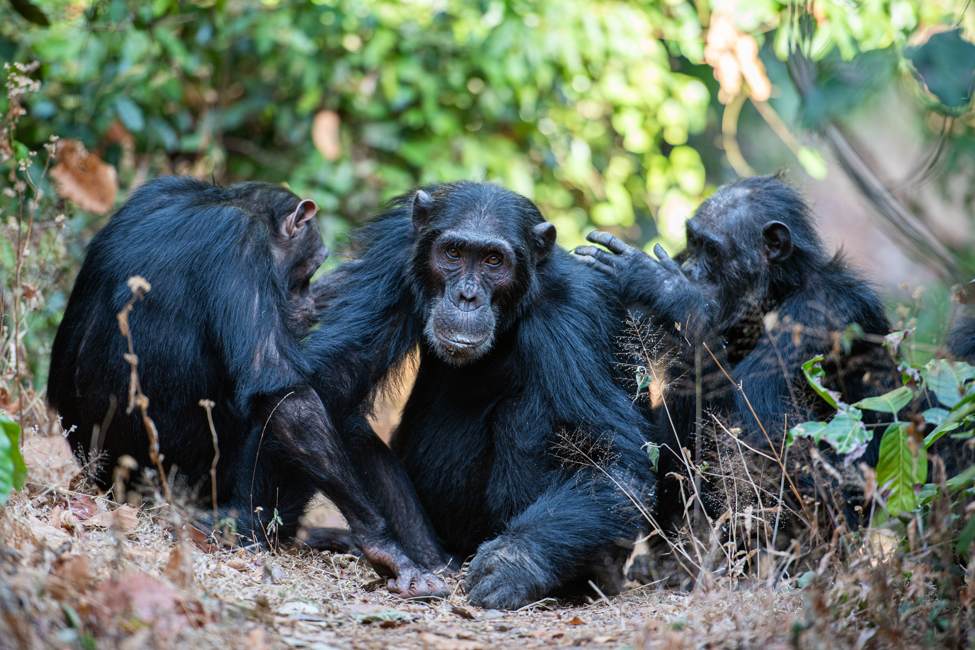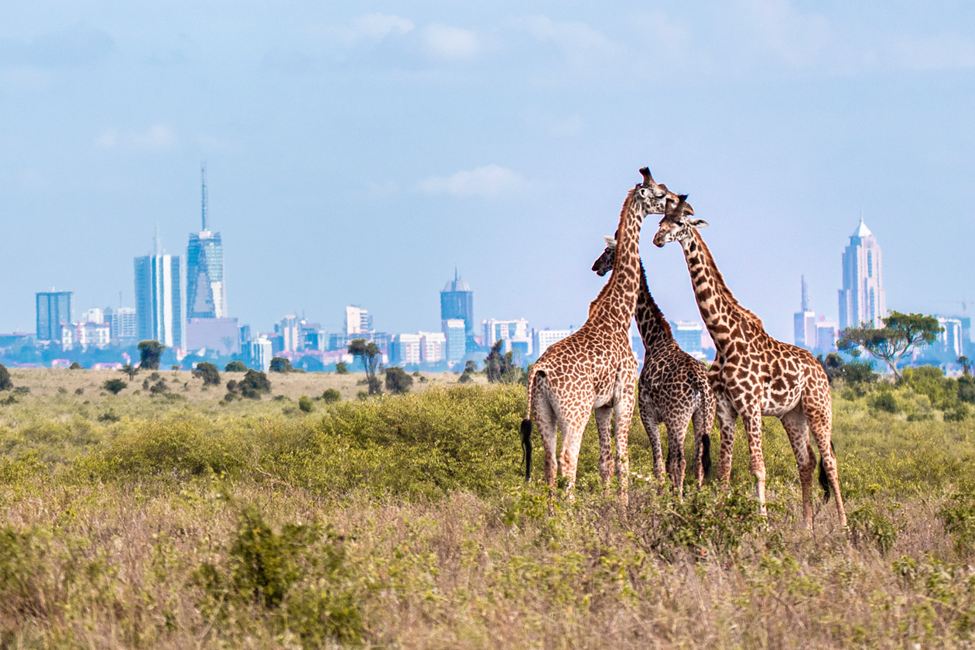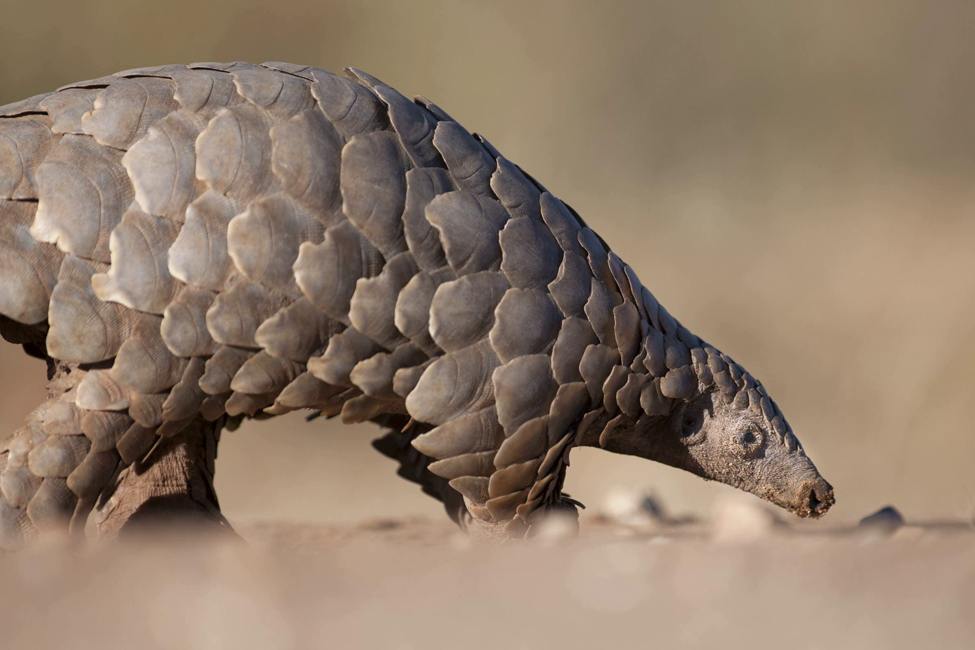The Great Wildebeest Migration—A Natural Wonder of the World
The Great Migration is one of the natural wonders of the world. Each year, two million wildebeest, zebras, and antelopes follow the rains for 1,000 miles from Tanzania to Kenya and back again. Animals fill the plains as far as the eye can see.
“Until you are there—hearing, seeing, looking at the dust cloud all around you, you can’t even fathom how incredible the Great Migration is,” said Ujuzi traveler Kathy Terlizzi. And we couldn’t agree more!
Interested in following the Great Wildebeest Migration in person? Read on to learn what it’s like. We answer questions like:
- What is the Great Migration?
- How long does the Great Wildebeest Migration last?
- When can I see the Great Wildebeest Migration in Tanzania?
- When can I see the Great Wildebeest Migration in Kenya?
- Why do wildebeest migrate?
- What other animals travel on the Great Migration?
- When do wildebeest give birth?
- Are wildebeest antelopes?
- Why are wildebeest also called gnus?
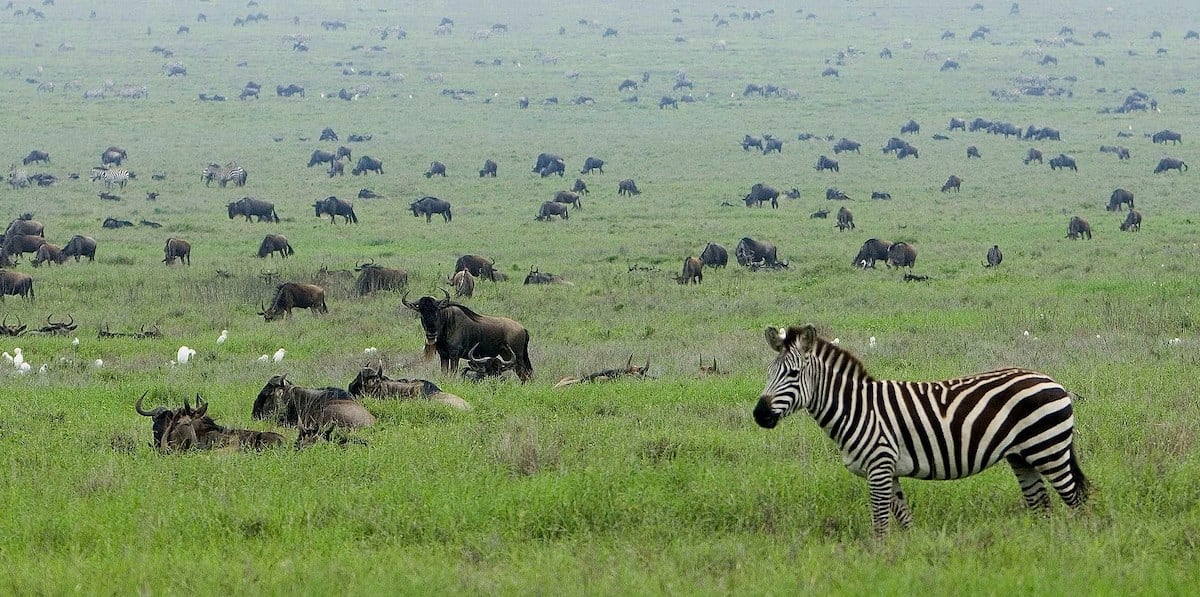
Wildebeest, zebras, and egrets pause for rest and grazing on the Great Migration. Photo by David Dennis.
What Is the Great Wildebeest Migration?
It’s the Largest Mammal Migration on Earth
The Great Migration is the largest and longest overland migration on earth. In a typical year, 1.5 million wildebeest, 250,000 zebras, 300,000 Thomson gazelles, and an assortment of other antelope participate in the Great Migration.
It’s a Trek for Survival
Wildebeest and other animals on the Great Migration must eat huge amounts of grass to survive. By following seasonal rains, they get access to more, fresher food than if they stayed in one place all year.
The Great Migration Isn’t Just for Wildebeests
Wildebeests make up the biggest part of the Great Migration. But zebras, Thomson’s gazelles, Grant’s gazelles, elands, and other species play crucial roles in ensuring the migration’s success.
Take zebras. While wildebeests have acute senses of hearing and smell that lead the herds to food and water, they don’t have great eyesight—but zebras do. When zebras see approaching predators, they warn their fellow travelers of the danger. Everyone benefits!
The animals on the migration also complement each other when it comes to diet. Zebras and wildebeests both eat tall grass, but they eat different parts of the stalk. As they eat, they expose the short grasses that Thomson’s gazelles prefer. Meanwhile, Grant’s gazelles and elands prefer broad-leaved plants and bushes.
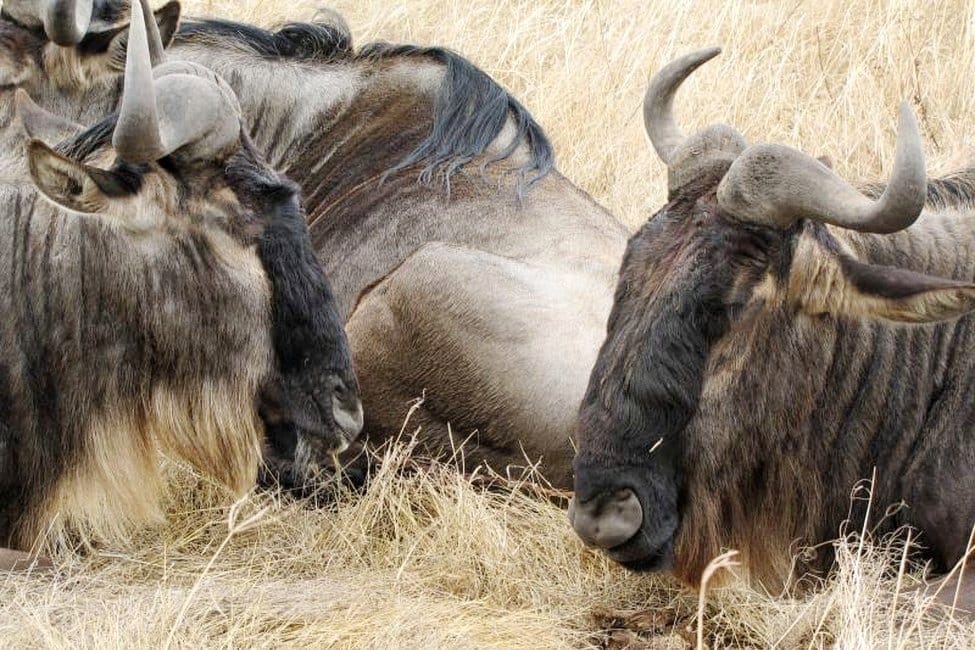
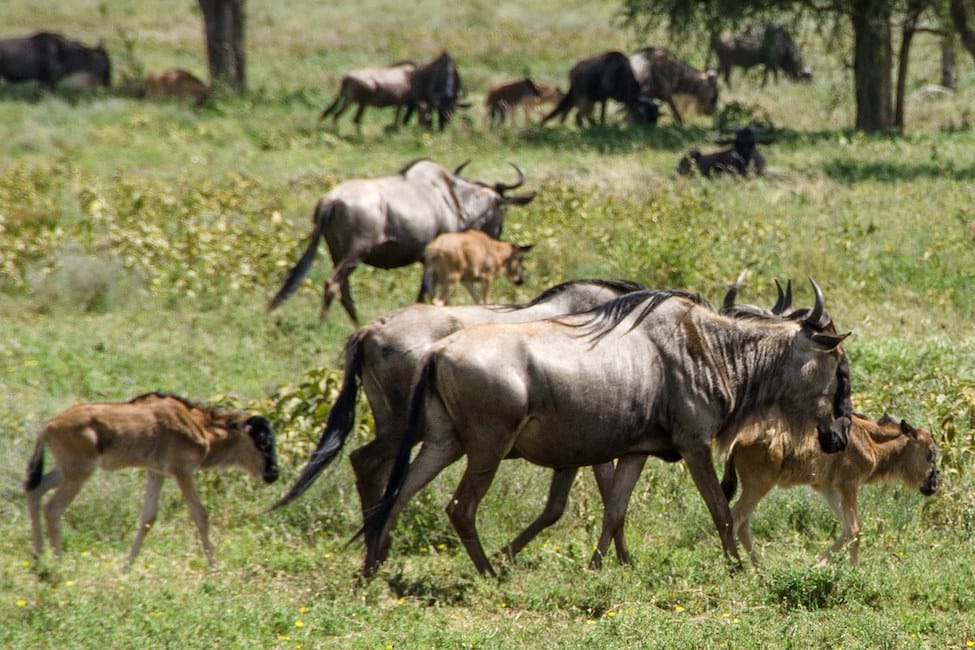
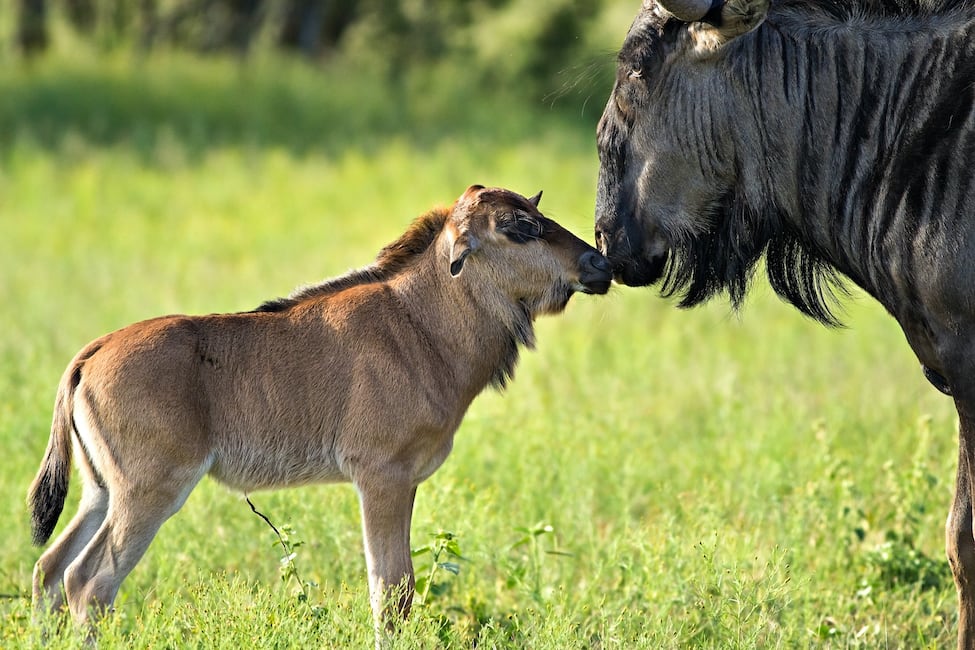
Blue wildebeests at rest in Ngorongoro Crater, Tanzania, by Ujuzi; mother wildebeests with calves in Ngorongoro Conservation Area, Tanzania, by Colin McMechan; a mother and calf touch noses.
How Long Does the Great Wildebeest Migration Last?
The animals on the Great Wildebeest Migration never stay in one place for long. They travel almost every day, even in calving season. That means the Great Migration happens all year.
To help you decide when you’d like to see it, here’s a monthly guide to the Great Migration. But keep in mind, wildebeest don’t look at calendars! They travel depending on the rains. So the schedule can vary by a few weeks.
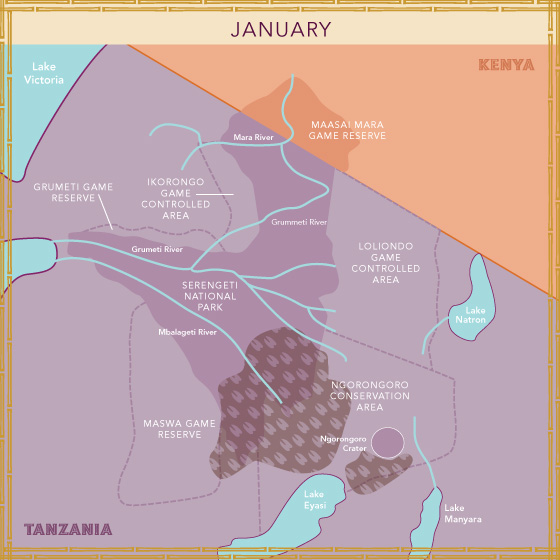
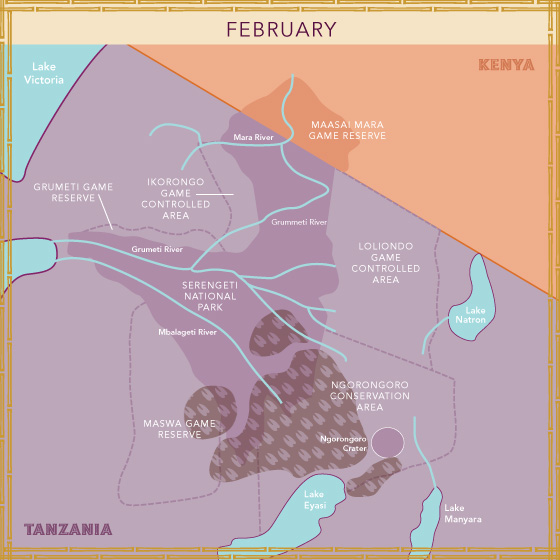
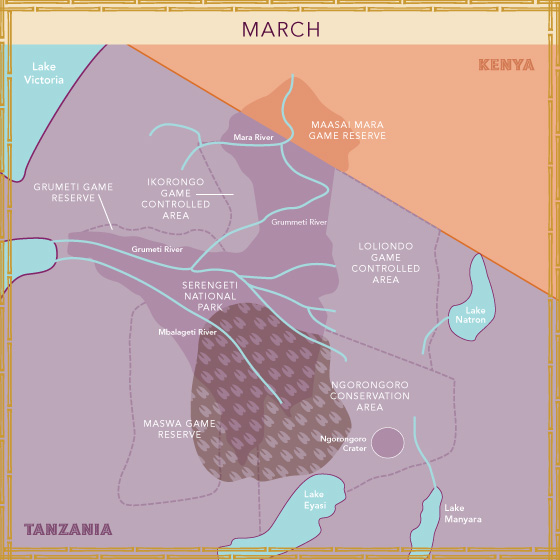
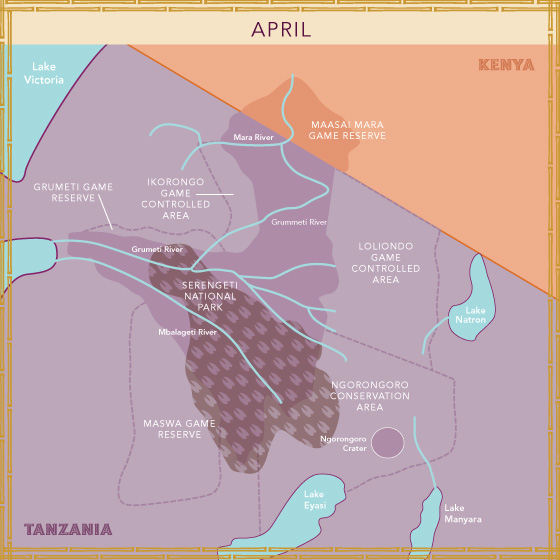
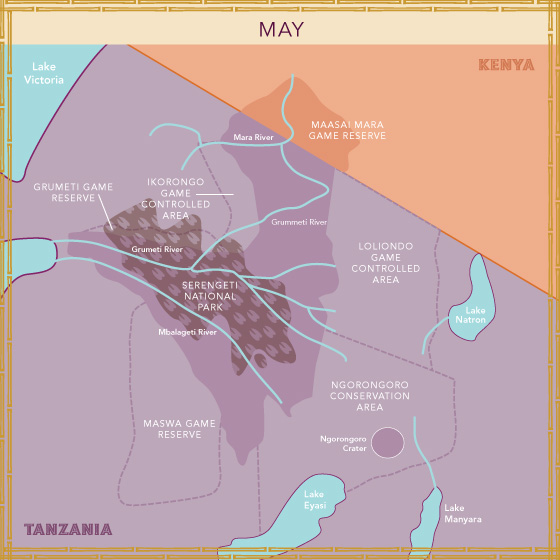
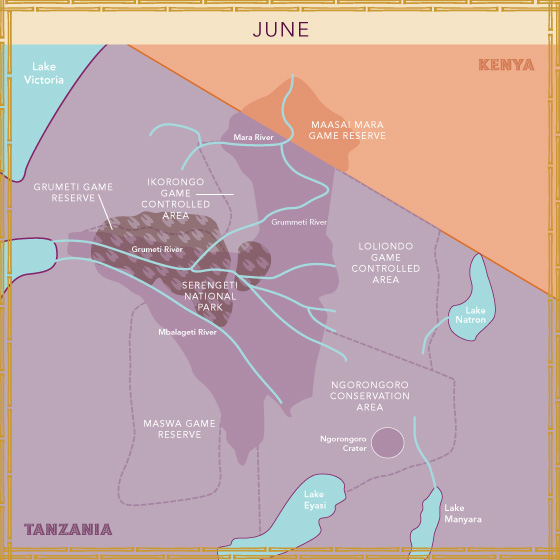
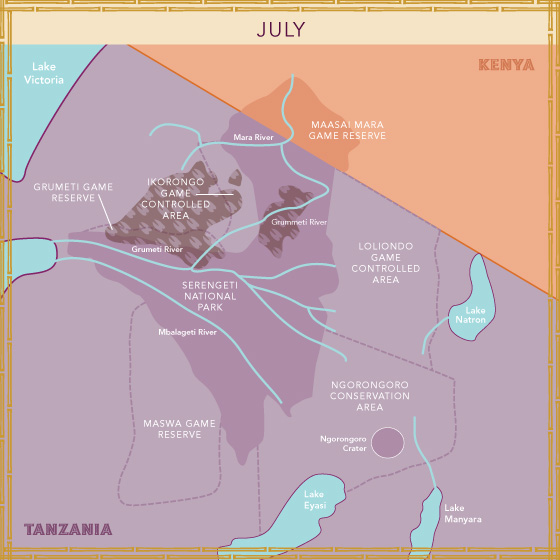
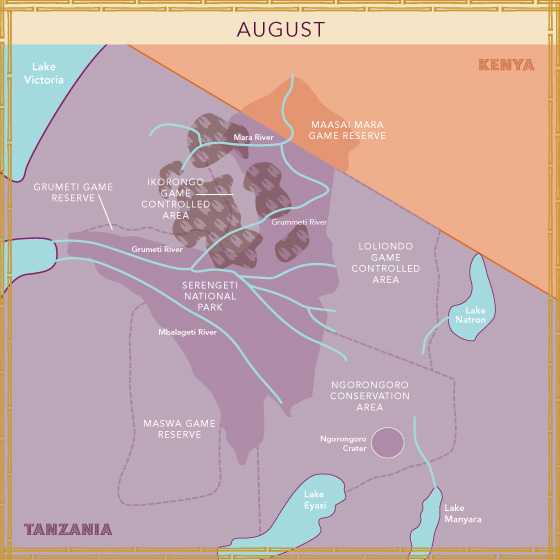
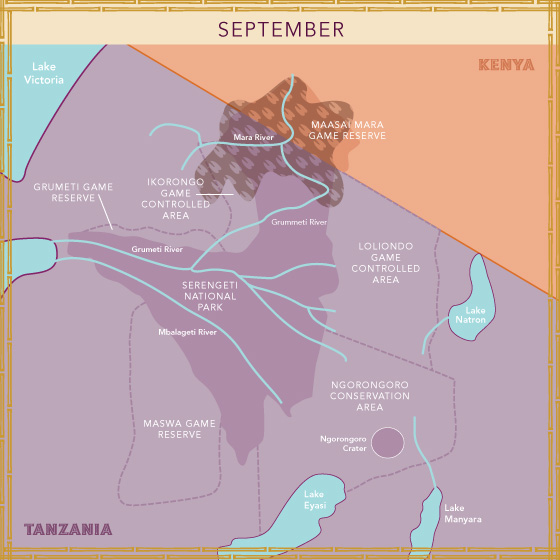
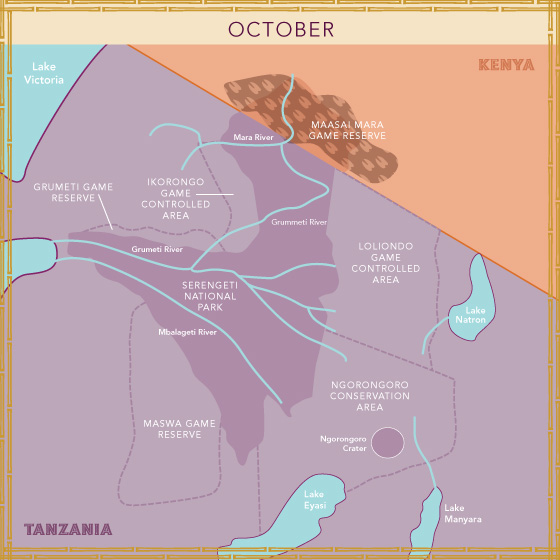
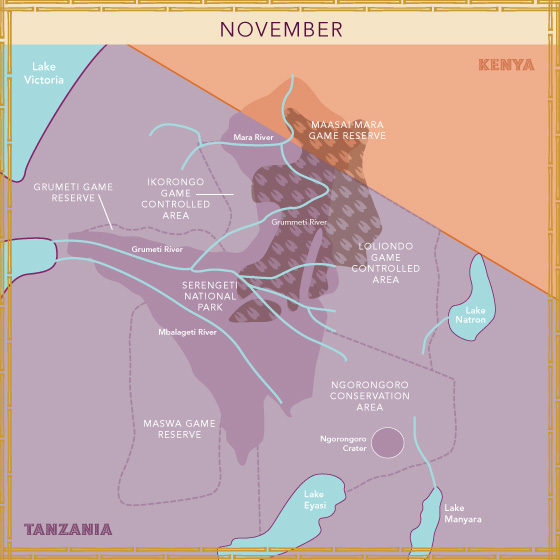
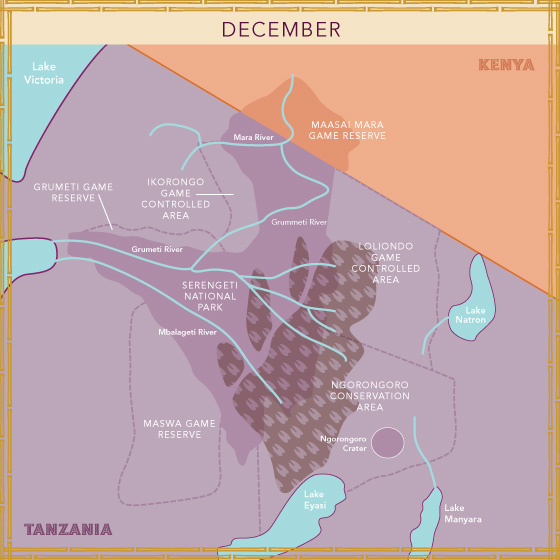
January to March: New Wildebeests Are Born in Tanzania
The Great Migration begins in the southern Serengeti and Ngorongoro Conservation Area, Tanzania, with the birth of a new generation of wildebeests. February is the peak of wildebeest calving season—about 400,000 calves are born over a period of just three weeks!
Wildebeest calves can stand within minutes of birth. And they can keep up with the herd when they are a few days old!
Adult wildebeests work together to protect their young from predators like lions, cheetahs, and hyenas. They sound alarm calls, then circle together around the calves, using their hooves and sharp horns for defense.
To visit Ngorongoro during this part of the migration, check out our Big 5 Safari and Northern Highlights sample itineraries.
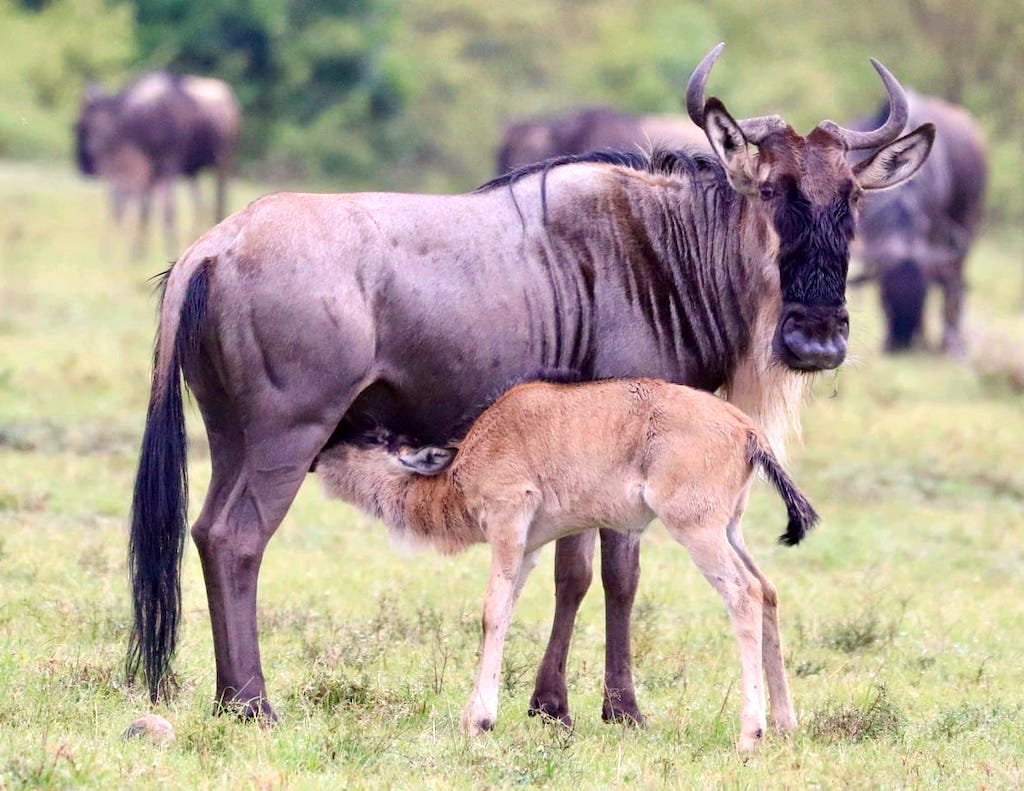
A wildebeest calf suckles milk from its mother on the Masai Mara in Kenya. Photo by Kandukuru Nagarjun.
April to May: Fattening Up
Now the Great Migration surges northward. The massive herd breaks into smaller groups as it follows the rains clockwise toward Serengeti’s Western Corridor.
For safari goers, it’s a challenge to keep up with the Great Migration this time of year. Seasonal flooding can close roads and block access to areas of the park.
June: Mating Season
The rains dissipate, and the herds regroup for mating in Serengeti’s Western Corridor. It’s an exciting time of year! You should have plenty of chances to watch males fight with each other as they show off their strength to potential mates. Our Best of Tanzania itinerary brings you to the center of the action.
July to August: River Crossings
The most dramatic moments of the Great Migration come when the herds cross crocodile-infested rivers. Rushing waters are difficult to swim through, particularly for calves.
The Grumeti in Western Serengeti is the first river to cross. A few weeks later, massive herds forge the Mara River in search of fresher pastures in Kenya. View the crossings on our Tanzania Migration Safari or our Legendary Kenya safari.
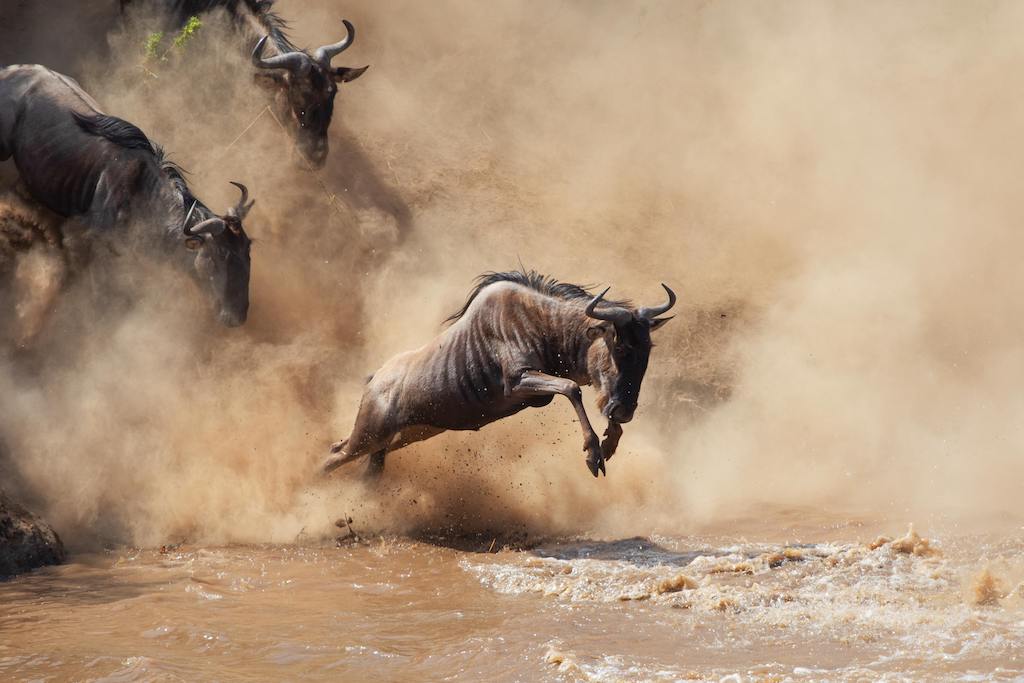
September to October: Gathering in Masai Mara, Kenya
Once they’ve crossed that final river, the animals take it easy in the Masai Mara, a national reserve on Kenya’s southern border. With plenty of greenery to go around, herds move more slowly. In particularly lush years, they may stay into November. Our East Africa Adventure itinerary is a great way to check out this part of the migration.
November to December: Return South
Light rains return to the Serengeti in November. Wildebeests, zebras, and antelopes travel southward, eventually reaching the southern Serengeti and Ngorongoro Conservation Area. As the savanna fills with animals, it becomes obvious why these parks have been named World Heritage Sites.
Soon, the cycle begins again!
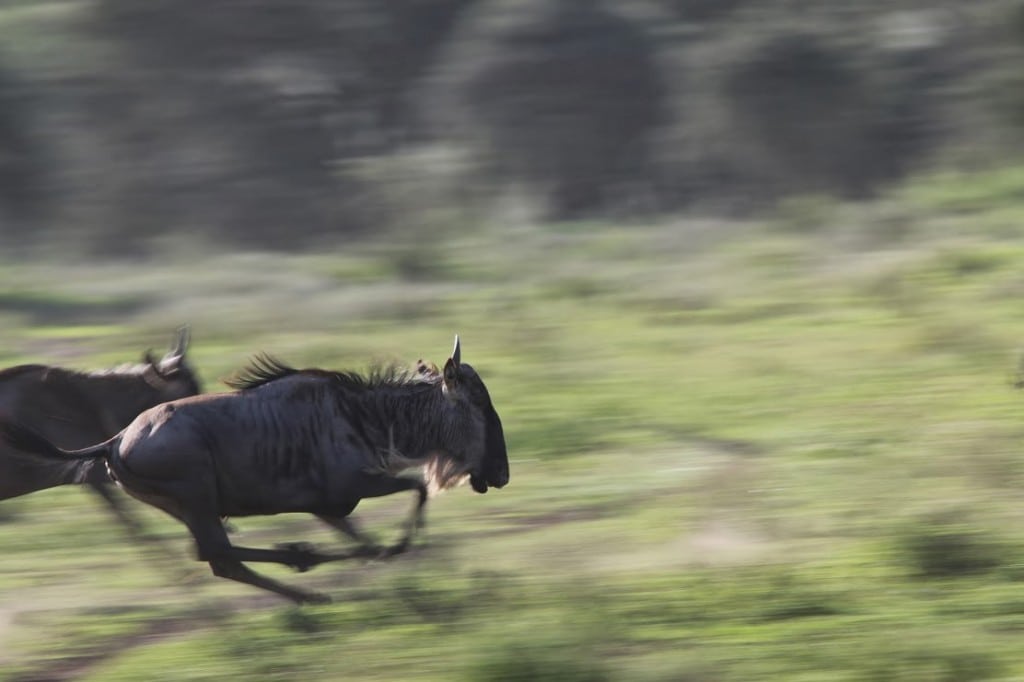
Wildebeest run across the plains. Photo taken by John Traeger on an Ujuzi safari.
Fun Facts About Wildebeests
A Wildebeest is a Gnu
“Gnu” comes from a European mispronunciation of t’gnu, the word used by the Khoehoe people of southwestern Africa to describe wildebeest. “Wildebeest” comes from a Dutch phrase meaning “wild beast.” In East Africa, it is more common to talk about wildebeest. You are more likely to hear “gnu” in southern Africa.
Wildebeests Are Antelopes
With their large, cow-like faces and spindly legs, wildebeest don’t look like your typical antelope. But they are part of the same family.
Wildebeest are among the biggest antelopes. The wildebeest you will see on the Great Migration can reach sizes up to 8 feet long, 5 feet tall, and 600 pounds.
The Wildebeests of East Africa are “Blue”
Did you know there are two species of wildebeest? The blue wildebeest (Connochaetes taurinus) is the kind you will find on the Great Migration. Black wildebeests (Connochaetes gnou) are found in southern Africa.
Are blue wildebeests really blue? It’s all a matter of perception. Adults come in varying shades of stony brown and gray, with a set of dark stripes—or brindling—over their shoulders. These stripes can look navy blue in the right light.
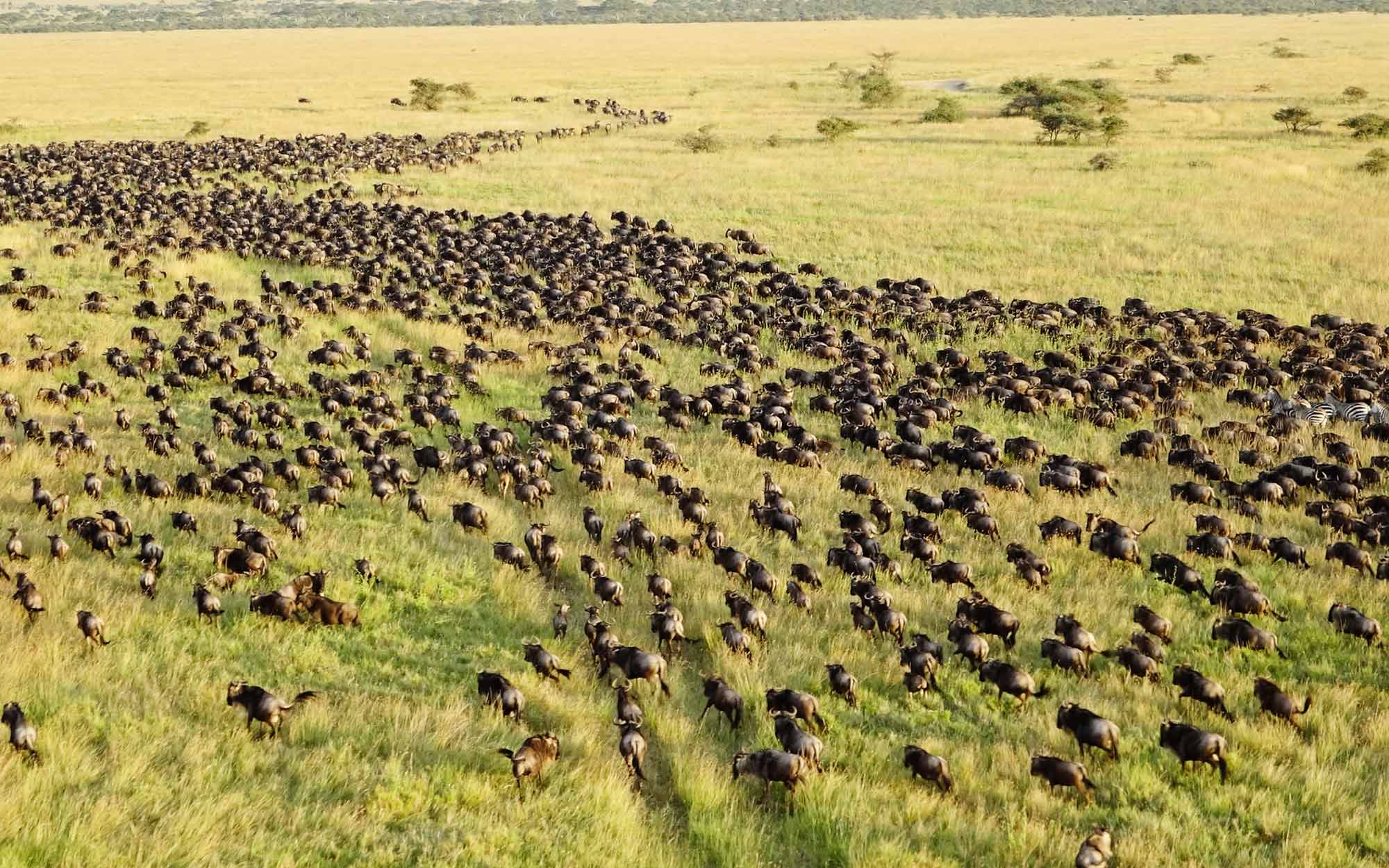
A group of Ujuzi travelers got this amazing view of the wildebeest migration during a hot air balloon safari over the Serengeti. Photo by Tony Raab.
See the Great Migration
Year after year, Ujuzi brings travelers to East Africa for the Great Wildebeest Migration. Most of our safari goers choose to stay at a lodge or luxury camp on the migratory group, then go out each day on game drives to watch wildlife in action. In addition to seeing zebras, wildebeests, and other antelopes, you’re likely to see predators like lions and cheetahs, which follow the herds. Depending on where you go, you may also see elephants, giraffes, ostriches, hippos, rhinos, African wild dogs, hyenas, jackals, and much more!
Another option is to stay in a luxury mobile tented camp that moves with the migration. Each day, you travel from campsite to campsite, usually in a safari vehicle. Following the migration by horseback or by foot are also options. (Luxury mobile camps include everything to keep you comfortable—furnished tents, cozy bedding, chef-prepared meals, well-maintained toilet facilities, and attentive staff.)
Perhaps the best way to take in the massive size of the Great Migration is with a hot air balloon ride, which Ujuzi can arrange for you on any visit to the Serengeti—take a look at our Iconic Tanzania itinerary for one example. Ujuzi traveler Becky Raab took a balloon safari in the Serengeti and said after her trip, “Being above all the animals and seeing the herds of wildebeest was truly an incredible experience.”
Ready to plan your Great Migration safari? Contact Ujuzi today.


